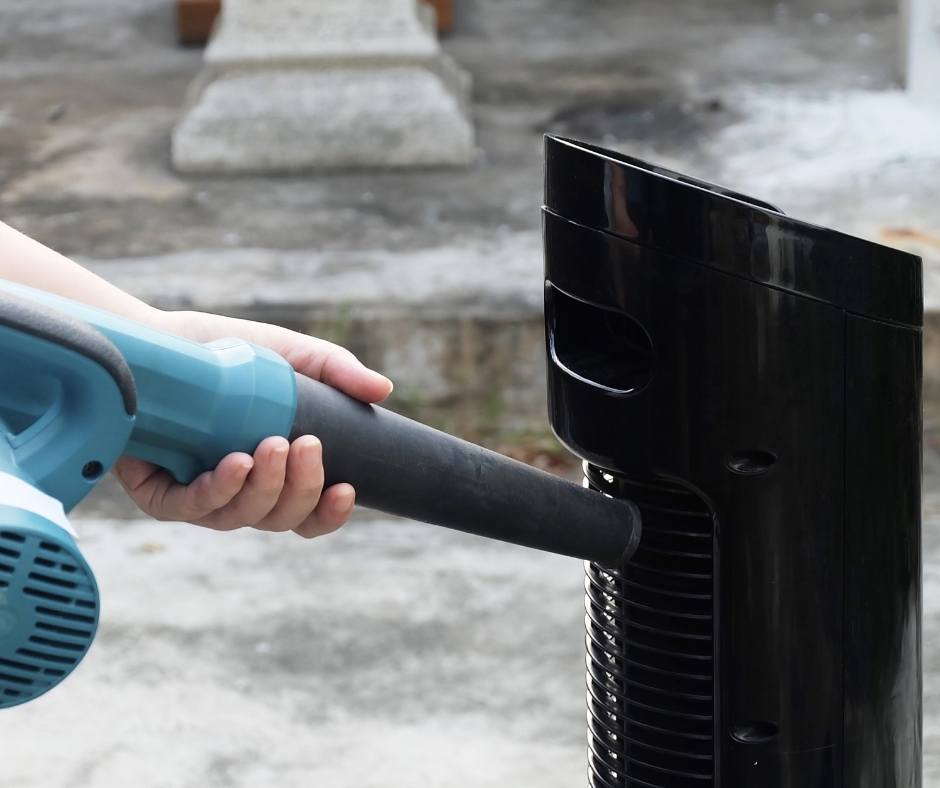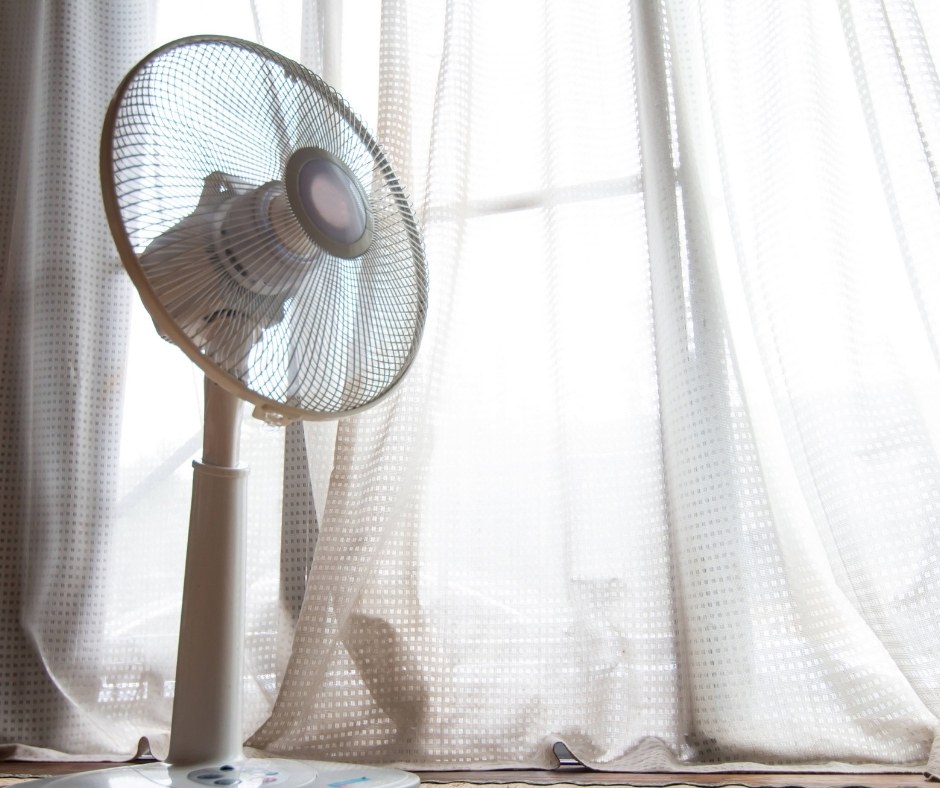It’s always the case that you find out your fan isn’t working when you need it the most. Replacing it shouldn’t cost too much money, but when it’s hot and sticky you just want to get the air moving as soon as possible.
Sometimes, you can fix what’s wrong pretty quickly. It could be as simple as a giving the fan a good, thorough cleaning. That’s why it’s important to know how to diagnose what’s wrong with your fan.
That’s where we come in. We’ve researched why tower fans won’t blow air and wrote this article to help you figure out what’s wrong. Hopefully, it’ll spare you a trip to the store to replace a fan you could have just fixed at home.
In This Article We'll Discuss
6 Most Common Issues with Tower Fans
Since tower fans are simple appliances, there aren’t a lot of different things that can go wrong with them. Always remember, more components mean more things that can break. Also, before you tear your fan apart looking for the issue, make sure it’s plugged in.
Here are the most common issues:
- Grime. The most common problem with tower fans is that they get dirty, which makes a lot of sense. Their purpose is to move air, and that air might be full of dust and other minor pollutants that will stick to the fan. Eventually, it builds up and causes performance issues.
- Blocked grills. Another simple issue that comes up is that the intake grill gets blocked, either partially or all the way.
- Overheating. There are a couple of reasons why your tower fan might overheat and stop working. It’s not a common problem in modern fans, but it does happen in older fans.
- Rattling. Loose fan blades or bad bearings can cause a rattling sound in your tower fan. You’ll want to address it right away because loose components can become detached components if not taken care of.
- Electronic failure. If your tower fan has a lot of electronics, those are likely to be the first things that fail. Electronics start to wear down more quickly in warm, humid conditions, which are likely the conditions you’re running your fan in.
- Dead motor. Another possibility is that your tower fan’s motor has died. As with all appliances, it will wear out and die at some point.
The obvious solution is to occasionally give your fan a thorough cleaning. Start by blowing the dirt off with a can of compressed air to get the big, loose stuff. Then, dig in and clean as much of it as you can reach.
The more you use it, the more you should clean it.
It’s a very simple issue that you’d think you’d notice, but it doesn’t take a complete blockage to affect fan performance. If only a portion of the intake is blocked, that means that much less air going through the fan.
One reason is that dirt and dust have gotten caught inside and are making it more difficult for the fan to cool off the motor. Another reason is that air gets captured in the vertical design and can’t escape. That air heats up and, the next thing you know, you’ve got an overheated motor.
It’s likely either loose fan blades or an oscillating mechanism in need of lubrication. If the blades are loose, you should tighten them. Give the oscillating mechanism a little bit of oil; too much will attract dust.
Always remember, the more complicated an appliance, the shorter a lifespan it will likely have. And, electronics are the most complicated components there are.
There isn’t much you can do if the electronics fail. If you can still run the fan on manual power, you can just adjust your use of it. However, if the fan is dead, you’ll need to replace it.
If that happens, your only option is to replace your tower fan. You could, in theory, order a replacement motor and swap it out, but in the majority of cases, it’s cheaper and much easier to get a replacement.
Why is My Fan Not Blowing Air?

You turn your fan on and nothing comes out of it. It’s hot, so you want air moving. Do you run out immediately and replace the fan? No. The issue might be very simple to fix.
Assuming you’ve checked to make sure the fan is plugged in, the issue is probably that the fan is very dirty and needs a thorough cleaning and lubing. During months of heavy use, this is something you should do every three months.
Pop the grills off if you can so you can reach every part of your fan. Then, use a can of compressed air to blow off as much dust and dirt as possible before taking a feather duster to it.
While you’re in there, lubricate the mechanical components of the motor. Be careful you don’t use too much oil, because oil traps and retains dust and dirt particles.
What is the Lifespan of a Tower Fan?
It is hard to know what the lifespan of any appliance should be because it will always be influenced by how often it gets used and the conditions in which it is used. Constant use in a dirty environment can kill a tower fan quickly.
Electronics can also deteriorate faster in warm, humid environments than in cool, dry ones. These days, tower fans can come with all kinds of extra electronic components. That includes remote controls, which could die before the floor unit does.
In general, most small appliances without a lot of electronic extras have an average lifespan of between 20-30 years. If your tower fan comes with a lot of electronic parts, then the expected lifespan is cut in half.
Keep in mind that, within that time, styles might change. So, your fan could still work even after it’s no longer in fashion.
Do Tower Fans Work Better than Regular Fans?

Comparing one style of a fan to another is difficult because both have their strengths and weaknesses. Tower fans are more stylish and can hit a wider range of your room, whereas a floor fan can push more air and is cheaper to operate.
Tower fans sit on a base and oscillate back and forth. This makes them perfect for bedrooms. They are also quieter and come with a greater range of extras.
Floor fans sit on two legs, which prevent them from tipping over. They also tend to have more power behind them. That makes them ideal for spaces where there is a lot of warm air, like in a kitchen.
Do Tower Fans Actually Cool the Air?
Although it might feel like a room gets cooler after you turn on a tower fan, in reality, tower fans don’t cool anything.
What they do is create the impression that they are cooling a room down by generating a breeze. That breeze not only helps circulate air to keep it from feeling stagnant, but it also helps cool our bodies down.
It does this through heat transfer. Thermodynamics tells us that the natural progression is to go from warmer to cooler. If the air around you is cooler than your body, which is 98.6 degrees Fahrenheit, then the heat on your skin transfers to the air around you.
The air around your body warms just a little bit, slowing the transfer. But, when a fan blows that air away and replaces it with air closer to room temperature, it allows more heat to radiate away from your body. And that makes you feel just a little cooler.
Conclusion

A fan won’t cool your room, but it will make you feel a little cooler. So, if your tower fan stops working on a really hot day, it’s a tough situation.
Before you head out to replace it, you’ll want to check a couple of things to see if you can just fix it at home. That will save you money and will also keep you from having to send a bunch of plastic and metal to a landfill.
We hope this article was informative and that it saves you a trip to the store for a new fan. If it was, please let us know in the comments. You can also share this article on your social media networks.

